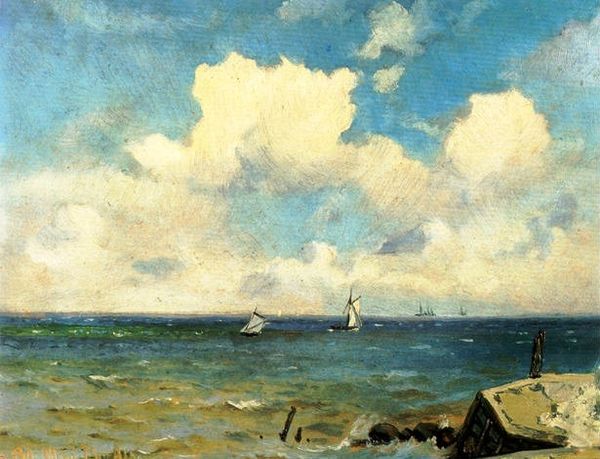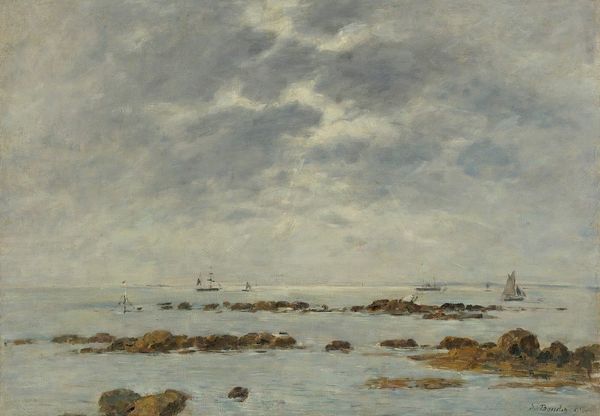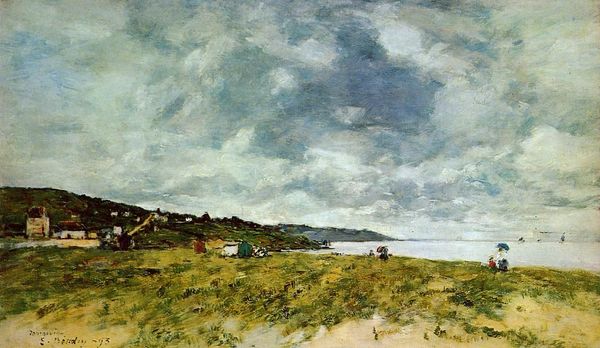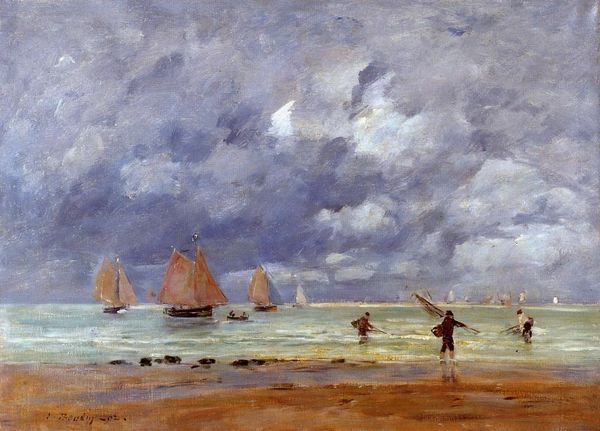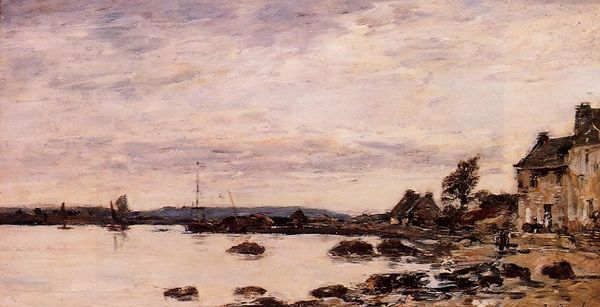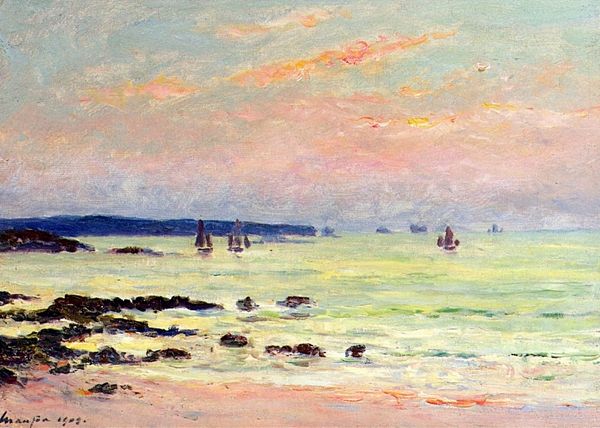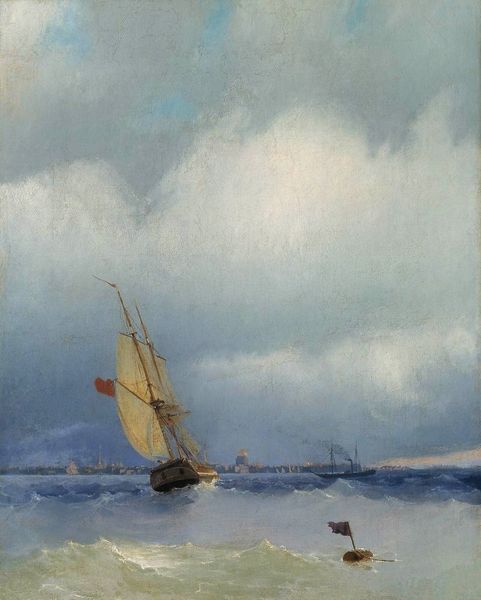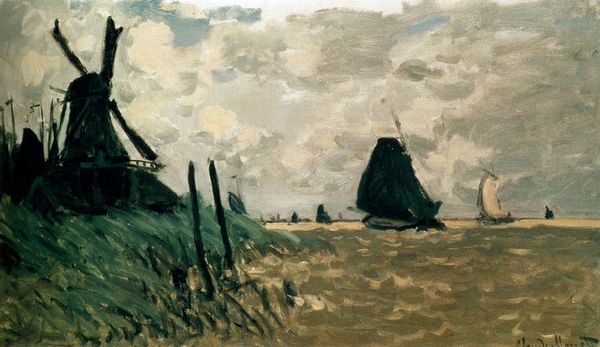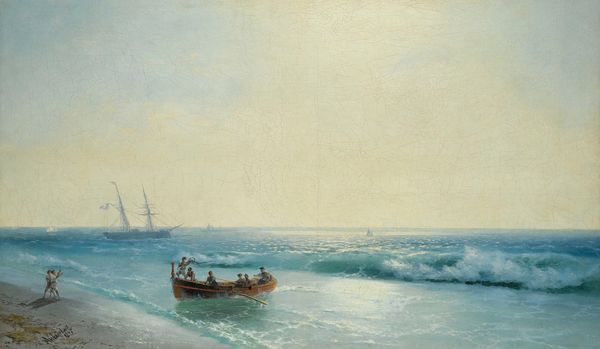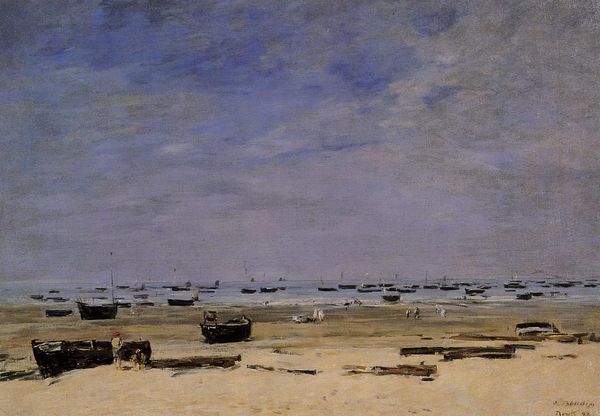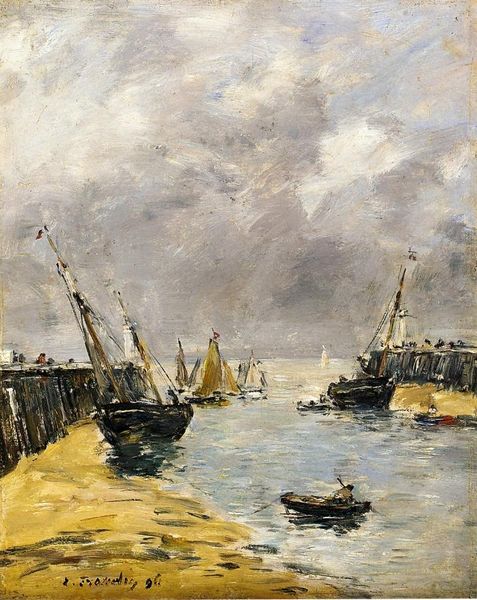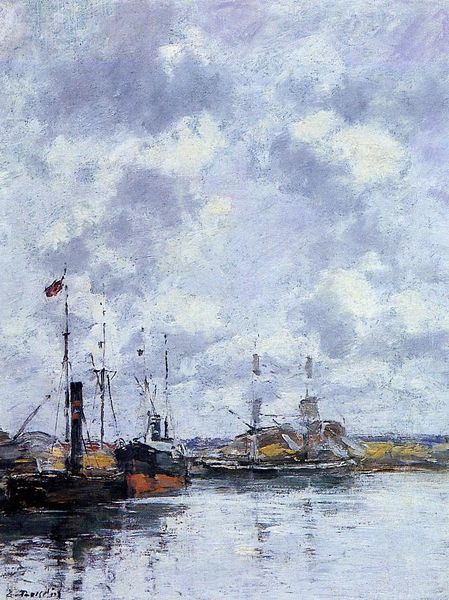
Yurievets. Gloomy Day on the Volga. 1890
0:00
0:00
isaaclevitan
Serpukhov Museum of History and Fine Arts, Serpukhov, Russia
Copyright: Public domain
Curator: Here we have Isaac Levitan’s "Yurievets. Gloomy Day on the Volga," painted in 1890. Levitan, of course, was a key figure in the development of Russian landscape painting, and this piece is held at the Serpukhov Museum of History and Fine Arts. What strikes you immediately about this scene? Editor: A quiet, melancholy stillness. The overcast sky dominates, pressing down on the water and the almost deserted shore. It's a palpable atmosphere, evoking a sense of introspection, perhaps even a subtle unease. The subdued colors amplify this. Curator: Indeed. Levitan’s choice of a low horizon line and a muted palette serves to emphasize the vastness and, frankly, the bleakness of the Russian landscape. The Volga River held great symbolic importance, often representing freedom and the immensity of Russia itself, yet here it’s rendered with such somber restraint. There’s an interplay here with the romanticism inherent in landscape art, but grounded in a stark realism. Editor: I'm struck by the scattering of dark boats along the shore. They appear almost like remnants or discarded hopes, juxtaposed with the active boats in the distance—which can't possibly compensate for that absence in the foreground, don't you think? The boats closest to the viewer add to the overall mood. There is a very somber stillness here, what with such muted coloration. Curator: Well, Levitan, throughout his career, navigated complex relationships with the established art institutions. Despite the understated nature of his pieces, there's certainly an emotive expression of nature, moving toward more subjective and mood-based art. In late 19th-century Russia, this shift carried social implications, aligning with intellectual currents questioning societal norms and seeking deeper, emotional truths. Editor: This search for truth via personal feeling is also reflected in the recurring symbols of water as spiritual cleanser and transition, even death at times. But also the clouds! I associate dark, heavy clouds with pending adversity or sorrow, contributing to this work's pensive and emotional qualities, and reinforcing feelings of nature's raw, sometimes unforgiving, emotional impact. Curator: A convincing point, and in that sense Levitan here prefigures elements of the symbolist movement. There’s a definite symbolic weight given to nature, laden with cultural meaning that resonates within Russian society at the time, despite its humble presentation. Editor: It makes you wonder how Russian society would take this symbol-rich, landscape as Levitan painted it... There is certainly some subversion present within all of its somber visual qualities. Curator: Perhaps! All considered, Levitan's work provides a profound engagement with Russian identity and societal values. Editor: I agree; exploring pieces such as this reveals much of a culture's history, emotional landscape, and symbolic lexicon through an introspective look at images of a physical place.
Comments
No comments
Be the first to comment and join the conversation on the ultimate creative platform.
